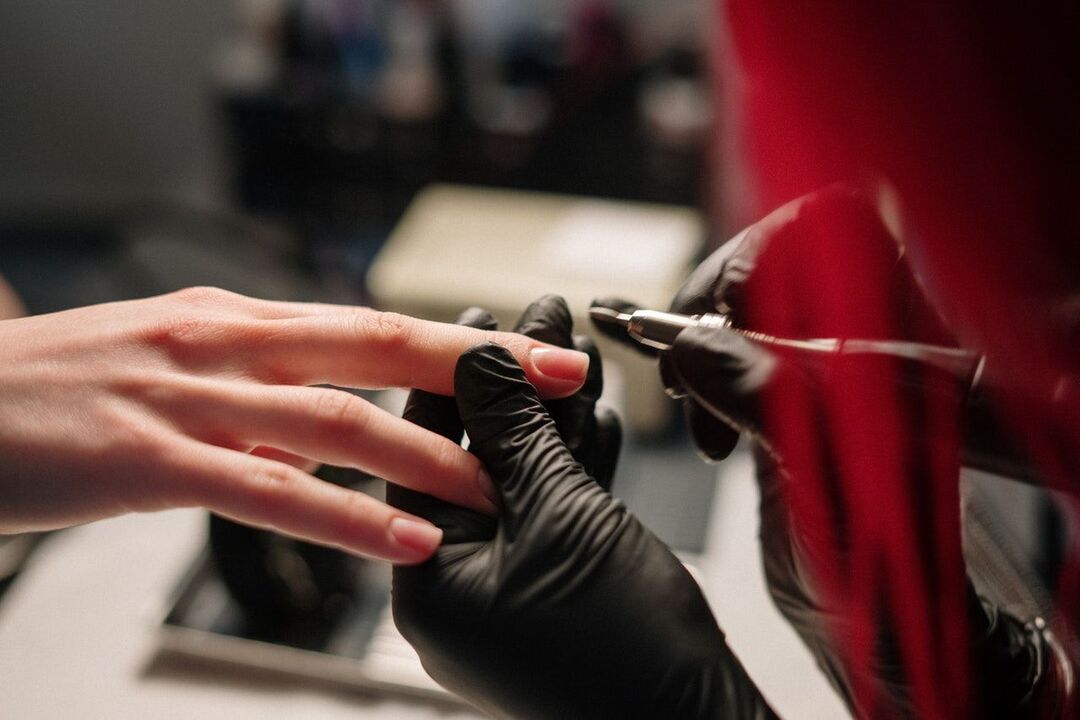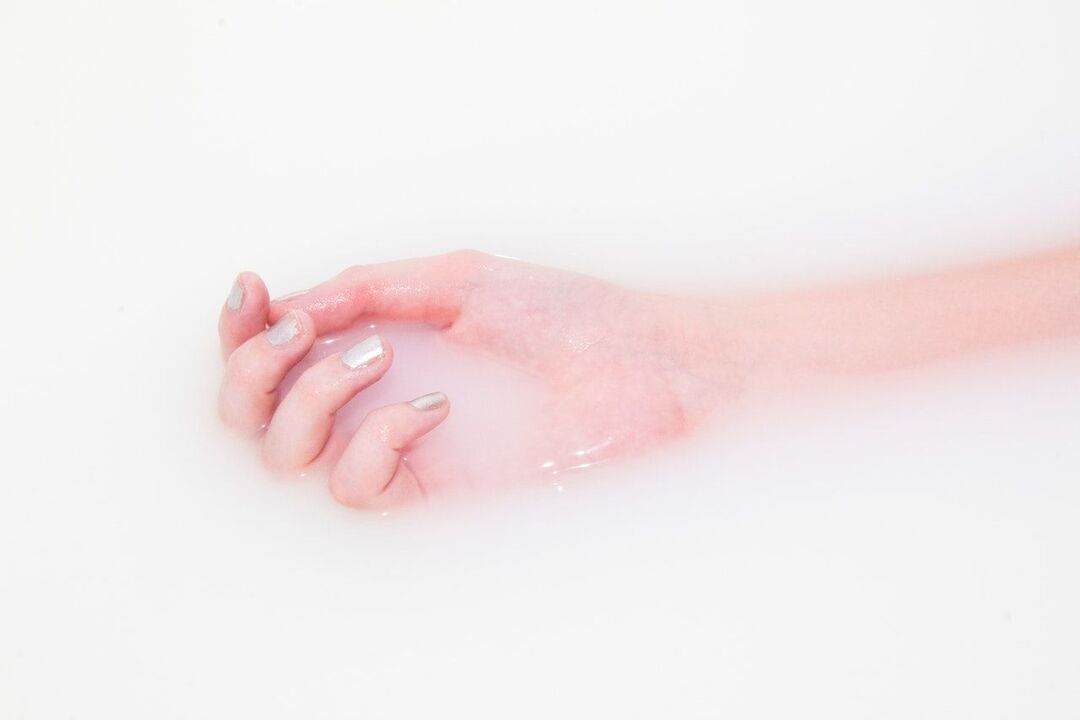
Why does fungus appear on nails? What are the symptoms of the disease? This disease destroys the nail plate and causes many problems. Our medical experts answer common questions and tell us how to cure it quickly with effective medicine.
According to statistics, 20% of the total population of the Earth is exposed to nail infections caused by parasitic fungi. This condition is called onychomycosis and is caused by a fungus on the nail.
What is onychomycosis?
This disease is contagious, infection occurs from person to person, as well as through contact and households through objects of common use. The fungal infection attacks the nail plate and eats away at it, destroying the nail.
Toenail fungus most often occurs on toenails, as feet are more susceptible to negative influences. However, the onset of pathological development is preceded by a weakening of the immune system, which leads to a decrease in the body's defenses, which does not allow the immune system to be sufficiently effective in fighting pathogens.
Several types of mycotic infections cause onychomycosis of the hands and feet:
- dermatophytes;
- yeast;
- moldy;
- trichophytosis;
- microsporia;
- athlete's foot
All fungal pathogens are divided into two broad categories:
- Pathogenic.
- Conditionally pathogenic.
Pathogenic microorganisms are microorganisms that penetrate from the outside and cause harm to human life. Conditional pathogenic agents are those that usually live on the skin, mucous and keratin areas of the human body, for example, fungi of the genus Candida.
Normally, the body coexists symbiotically with opportunistic pathogenic microorganisms. But with decreased immunity and favorable conditions, these organisms begin to grow uncontrollably, which leads to the appearance of pathological processes.
Why does fungus appear on nails?
Common causes of mycosis may include the following:
- weak immune system;
- concomitant chronic diseases (for example, eczema, diabetes);
- failure to comply with personal hygiene rules;
- visiting places where fungal infections are concentrated (bathhouses, saunas, swimming pools, public showers, water parks);
- wearing closed shoes, where the feet are subject to a lot of sweat;
- old age (after 65 years, natural immunity decreases);
- working environment conditions (working in humid environment, at high room temperature, when there is radiation, dusty and dirty environment).

In such conditions, nail fungus develops on the hands and feet. It has been noted that the disease is also distributed according to gender - men suffer almost 3 times more often than women.
How do pathogens penetrate the nail plate?
The keratin plate itself is not susceptible to penetration by mycotic pathogens. In order for an infection to begin to develop, its integrity must be compromised. There are three main ways mycotic organisms enter:
- Through the nail plate due to injury and damage to the keratin layer;
- Through the subungual notch;
- Through the proximal nail fold.
Conditionally pathogenic organisms often cause cuticle inflammation.
What types of onychomycosis are there?
The disease comes in three types or stages, each varying in severity:
- Normotropic type. Thin yellowish-gray stripes appear on the nail plate, fragility and fragility appear, but subungual thickening and hyperkeratosis do not occur.
- Hypertrophic type. It appears when there is no treatment or it is chosen incorrectly and is ineffective. First of all, the phenomenon of subungual hyperkeratosis occurs, which leads to thickening, which persists for a long time after successful treatment.
- Atrophic type. The most difficult stage of the disease. Nails become thinner, become fragile and fragile, change color to dark gray brown, over time their growth is disrupted and complete separation from the nail bed occurs.
Knowing the type of disease will allow you to decide how to treat nail fungus.
What are the symptoms of onychomycosis?
Signs that indicate a fungal infection:
- the appearance of light yellow or gray stripes and spots on the nail plate, which makes the appearance painful;
- change the color of the plate to yellow, brown and brown, which darkens over time to black;
- cuticle and proximal ridge become inflamed;
- plate thickens and becomes brittle, brittle, brittle;
- a characteristic specific smell appears;
- Over time, the nail plate completely peels off.
How to diagnose the disease?
Discoloration, roughness and debris can help to suspect onychomycosis. However, the same symptoms are also characteristic of many other diseases (for example, eczema, psoriasis, lichen planus). Therefore, one examination by a doctor is not enough.
With this problem you need to contact a dermatologist, podiatrist or mycologist. If it is difficult to distinguish the cause of the disease, you should contact a general practitioner or family doctor, who will refer you to a specialist. To adjust treatment, you may need to consult a surgeon.
When making a diagnosis, there is a need to confirm the origin of the mycotic infection. To do this, a microscopic examination of keratin thickening is performed. However, to determine the type of pathogen, it is necessary to perform a bacterial culture for analysis.
How to cure nail fungus?
Treatment is a long process, taking from several months to a year and requiring significant effort from the patient.

Antifungal therapy depends on the route of exposure to the affected area and may:
- local - the use of only local ointments and creams that affect the pathogen at the site of the lesion;
- systemic - the use of oral antifungal drugs of systemic action, which is necessary if the infection has penetrated the affected area through the bloodstream;
- combination - a combination of local and systemic therapy, which gives the best results.
As the most effective remedy for nail fungus, systemic preparations containing the following ingredients are used:
- ketoconazole ingredient— the effectiveness of treatment with this drug is achieved in half of the cases, the estimated course is from 8 to 12 months;
- itraconazole ingredientis a popular antifungal drug that is effective in 85% of cases. The obvious advantage is the short treatment - only 10 days;
- terbinafine hydrochloride ingredient- one of the best drugs that helps in 90% of cases. The course of treatment lasts up to 4 months for onychomycosis on the hands and from 6 months on the feet. However, the appearance changed by mycosis can last a long time - up to 50 weeks.
Systemic therapy is used in cases of moderate severity or more. Usually, oral antimycotics are combined with the use of topical ointments. However, systemic agents have several side effects and can be toxic. Therefore, its use is not practiced in pregnant and lactating women, as well as in people with chronic metabolic and liver diseases.
Local drugs in the form of creams and ointments do not have a toxic effect, but are treated only in mild cases - when only ⅓ of the nail plate is changed and when there is no deep penetration of the pathogen into the keratin tissue. This is because local products are not able to penetrate deep into the keratin layer.
In mild cases, when treatment is started on time, systemic agents can be dispensed with. However, with an advanced clinical picture, it is sometimes necessary to remove the damaged area surgically, and only after that local therapy is carried out. Removal is painless and with subsequent antifungal treatment leads to complete recovery.























